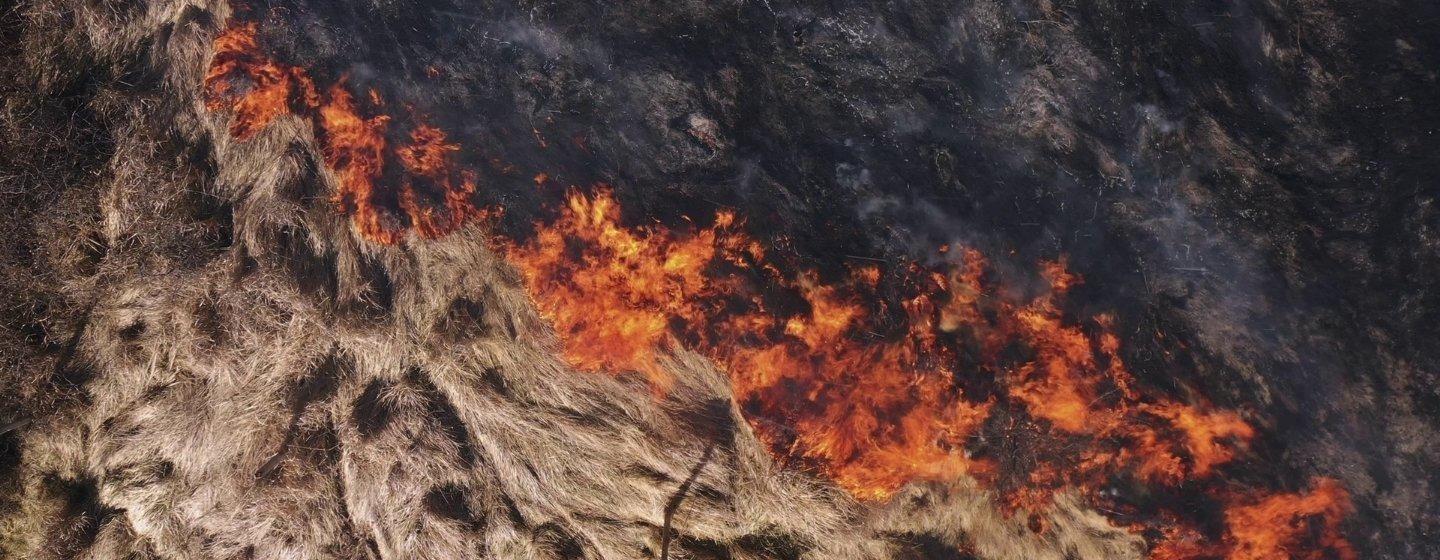Wildfires Are Common—Here’s Why They’re Getting Worse


The spring wildfire season has barely started, but through the smoke, it’s already clear that it’s going to be an extremely challenging time.
While raging wildfires in the West usually get the most attention, the area from Texas to Virginia experiences more wildfires than any other part of the country. Zoom in a little more, and you find the Southeast accounted for more than one-third of U.S. wildfires last year and nearly half in 2023, according to the National Interagency Fire Center.
Put it all together and the data is clear: wildfires are getting worse.
Here’s why this season could be even more intense.
Periods of extended droughts and longer heat waves caused by climate change, shifting wind and weather patterns, debris from Hurricane Helene and rapid population growth are all combining to make wildfires harder to fight and contain. Reports from federal and state agencies show roughly 821,906 acres of public and private forestlands in western North Carolina were damaged by Hurricane Helene.
As Michael Cheek, director of the North Carolina Forest Service’s mountain division, told The Washington Post, “Due to the Helene debris, the fires are going to be bigger. Homes are going to burn, and hopefully no one dies.”
To make matters worse, all the timber from the damaged forestlands could provide ground fuel for fires for more than a decade. In addition, the downed trees block roads and trails, making it more difficult for firefighters to get access to burning areas. One more complication is that shifting winds make it impossible at times for helicopters to scoop water out of nearby lakes to dump on fires.
“It’s a combination of factors that have all come together, and those will probably be with us all summer and possibly for summers to come,” Dustin Waycaster, Lake Lure fire chief, told Sci NC. “Warmer temperatures and less rain are making wildfire season longer every year.”
The wildfire threat is constantly changing.
Federal, state and local firefighters are battling the blazes. Residents around the fires have been evacuated. Counties are issuing air quality alerts. North Carolina has ordered a statewide burn ban.
But one of the factors increasing the risk is North Carolina’s exploding population: there are more people living in fire-prone areas. This study from the U.S. Department of Agriculture is a good example. The population of Buncombe County, where Asheville is located, grew by 70% from 1990 to 2020. As you can imagine, there are a lot of woodlands being cut down for housing developments around the city.
As Robert Scheller, associate dean for research in the College of Natural Resources at NC State, told The Washington Post, “it’s more than just the acreage burned, but also what is the density of humans on the acreage burned.”
Foresters have long worked to prevent out-of-control wildfires by setting controlled burns to get rid of excess fuel. However, the conditions must be exactly right, and the dry and windy conditions this spring combined with the debris from Helene have prevented those burns.
Watch this Sci NC story to see how North Carolina's Pilot Mountain bounced back after a recent wildfire.
Prescribed burns at NC’s Pilot Mountain helped it bounce back after a recent wildfire.